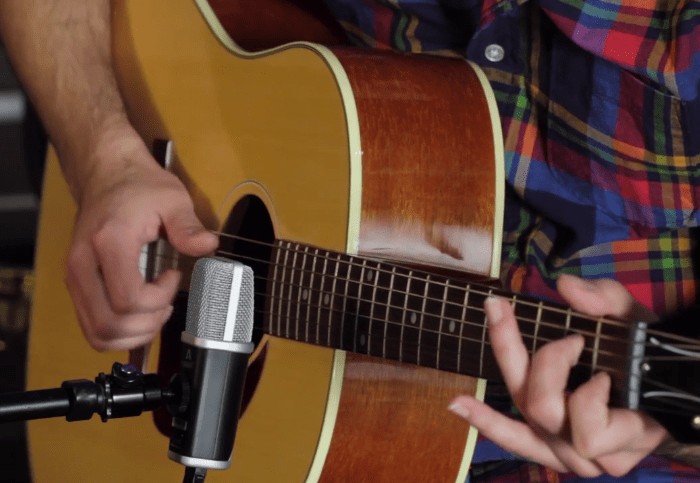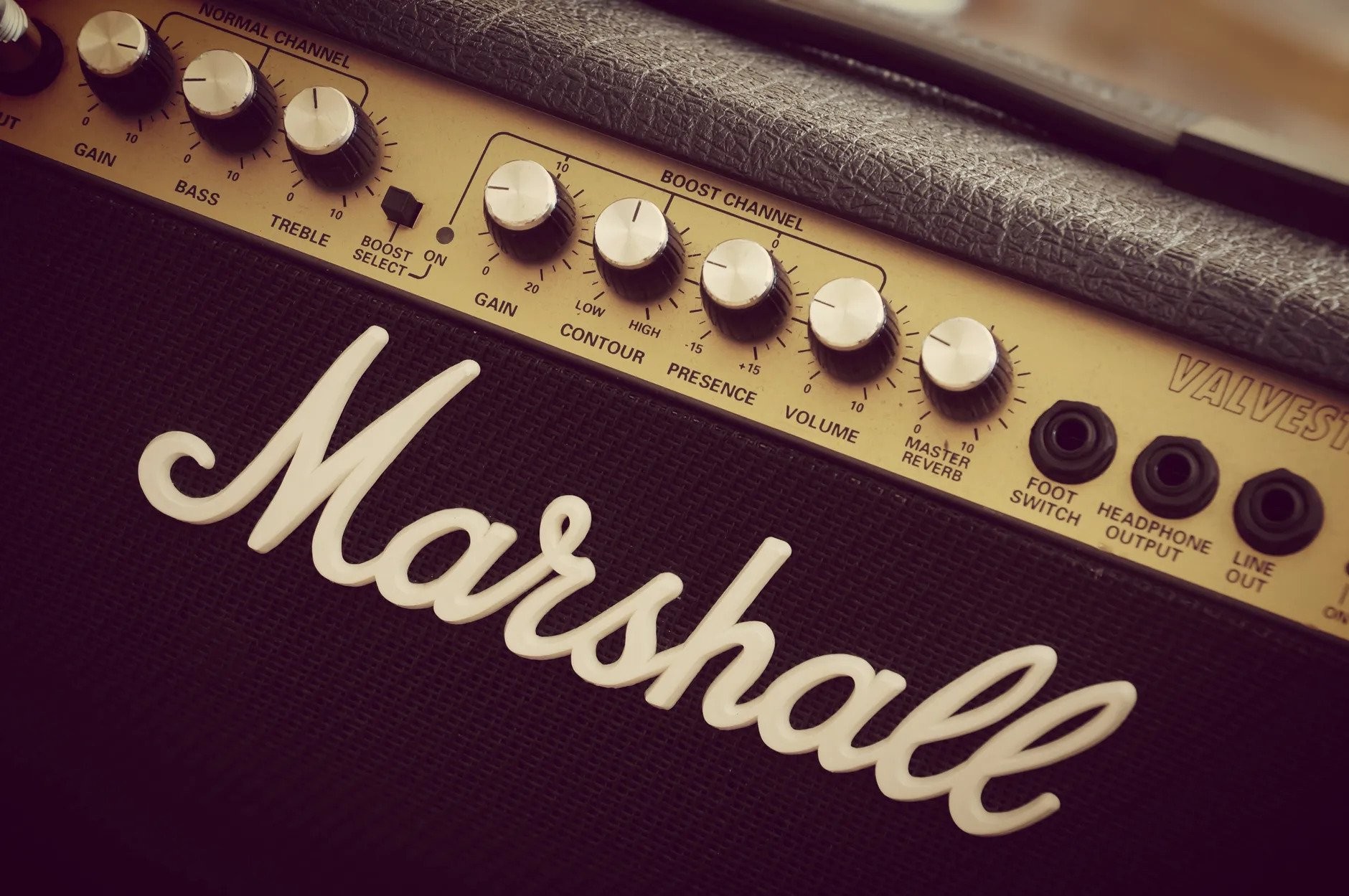Choosing between acoustic and electric guitar for your first instrument? It’s a common dilemma, and at LEARNS.EDU.VN, we’re here to guide you. This article dives into the myths and realities, helping you make an informed decision based on your musical aspirations. Discover whether starting with an acoustic guitar or diving straight into electric guitar is the right path for you, ultimately enhancing your guitar playing journey and musical skills.
1. Debunking Common Guitar Learning Myths
Many beginners face conflicting advice when starting their guitar journey. Let’s dismantle some common myths to clear the path for your musical endeavors.
1.1. Myth: Acoustic Guitar First is Mandatory
The idea that you must learn on an acoustic guitar before moving to electric is a widespread belief. The reasoning is that acoustic guitars require more finger strength, making the electric guitar seem easier by comparison. While there’s some truth to this, it’s not a universal rule. Starting with an acoustic can build finger strength, but it’s not the only path to becoming a proficient guitarist. Many successful guitarists began with electric guitars and transitioned to acoustic later.
1.1.1. The Electric Start: A Viable Alternative
Starting with an electric guitar is perfectly acceptable and often more motivating for aspiring guitarists eager to play their favorite rock or pop songs. Adjustments might be needed when switching to acoustic, such as applying more pressure on the strings and adapting to a wider neck. However, the core techniques and chord knowledge transfer seamlessly between both instruments. Whether you start with electric guitar or acoustic, the most important thing is to develop a good practice routine and a solid foundation of guitar skills.
1.1.2. Personal Experience and Flexibility
Personal anecdotes often highlight the flexibility of learning guitar. One can begin with an electric guitar, make good progress, and then adapt to the acoustic guitar with minor adjustments. This adaptability showcases that the order of learning isn’t as critical as the dedication to practice and learning the fundamentals. As long as you are inspired by the guitar and the type of music you wish to play, you will be successful regardless of the type of guitar you choose.
1.2. Myth: Electric Guitars are Silent Without Amplifiers
The belief that electric guitars are inaudible without an amplifier is a common misconception. While an amplifier significantly enhances the sound and allows you to explore various tones and effects, an electric guitar produces sound even when unplugged. It’s quieter than an acoustic guitar, but still audible enough for practice.
1.2.1. Practicing Unplugged
Practicing unplugged is a convenient option for quiet practice sessions. While it’s ideal to have an amplifier to hear your mistakes clearly and enjoy the full experience, beginners can start without one. Purchasing an amplifier can always be a later investment. Many guitarists find themselves picking up an electric guitar and playing unplugged when they want to practice but don’t want to disturb others.
1.2.2. The Amplifier Investment
Investing in an amplifier is highly recommended for serious guitarists. It allows for a richer, more immersive experience and enables you to experiment with different sounds and effects. However, it shouldn’t be a barrier to starting your electric guitar journey. Over time, an amplifier will allow you to explore your own unique style and sound.
1.3. Myth: Classical Guitar is the Best Starting Point
Classical guitars have nylon strings, which are easier on the fingers compared to steel strings, but they are not necessarily the best choice for all beginners. The wider neck and specific techniques required for classical guitar may not align with the goals of those interested in playing popular music or rock.
1.3.1. Focusing on Musical Goals
The type of guitar you choose should align with your musical aspirations. If your goal is to play classical or flamenco music, then a classical guitar is the obvious choice. However, if you want to play modern songs or explore different genres, an acoustic or electric guitar might be more suitable.
1.3.2. Choosing the Right Instrument for Your Style
Selecting the right instrument is crucial for staying motivated and enjoying the learning process. For example, if you are inspired by legendary electric guitarists such as Jimi Hendrix, Eric Clapton, or B.B. King, an electric guitar will be the better choice. Similarly, if you are more inclined to play folk music or become a singer-songwriter, an acoustic guitar might be more inspiring.
2. Identifying Your Guitar Learning Inspiration
The most crucial factor in choosing between an acoustic and electric guitar is which one inspires you the most. Inspiration fuels practice and makes the learning process enjoyable.
2.1. Electric Guitar Inspiration
If you are drawn to the sounds and styles of iconic electric guitarists like Slash, David Gilmour, or Brian May, an electric guitar is the logical choice. The ability to emulate your heroes and explore various effects can be incredibly motivating.
2.1.1. Embracing the Electric Guitar Culture
The electric guitar is deeply embedded in rock, blues, and metal genres. Starting with an electric guitar allows you to immerse yourself in this culture and explore the vast array of techniques and sounds associated with it. From distortion and wah pedals to intricate solos and riffs, the electric guitar offers endless possibilities for creative expression.
2.1.2. Finding Your Sound
One of the most exciting aspects of playing the electric guitar is the ability to shape your sound using amplifiers and effects pedals. Experimenting with different combinations can lead to discovering your unique voice on the instrument. This exploration is an integral part of the electric guitar experience.
2.2. Acoustic Guitar Inspiration
If singer-songwriters like Ed Sheeran, Bob Dylan, or Taylor Swift inspire you, an acoustic guitar might be the better starting point. The acoustic guitar is perfect for strumming chords, fingerpicking, and accompanying vocals.
2.2.1. The Singer-Songwriter’s Companion
The acoustic guitar is a staple for singer-songwriters. Its portability and versatility make it ideal for writing songs, performing live, and recording music. The intimate sound of the acoustic guitar can create a powerful connection with the audience.
2.2.2. Exploring Acoustic Techniques
The acoustic guitar offers a wide range of techniques, including fingerstyle playing, strumming, and percussive techniques. Mastering these techniques can open up new avenues for musical expression. Many guitarists find the simplicity and natural sound of the acoustic guitar incredibly rewarding.
3. Pros and Cons: Electric vs. Acoustic Guitar
To help you make a more informed decision, here’s a breakdown of the pros and cons of learning on an electric versus an acoustic guitar.
3.1. Electric Guitar: Advantages and Disadvantages
| Pros | Cons |
|---|---|
| Lighter strings make it easier to press down and play | Requires an amplifier for public performance |
| Easier to learn lead guitar techniques | Need to adjust technique slightly for acoustic guitar |
| More commonly used in bands | Electric guitars are heavier than acoustic guitars |
| More options to shape your sound with effects |
3.1.1. Ease of Playability
Electric guitars generally have lighter gauge strings and lower action (the distance between the strings and the fretboard), making them easier to play, especially for beginners. This ease of playability can help beginners build confidence and progress more quickly.
3.1.2. Versatility and Sound Shaping
Electric guitars offer a wide range of tonal possibilities through amplifiers and effects pedals. This versatility allows you to explore different genres and find your unique sound. From clean, shimmering tones to heavily distorted riffs, the electric guitar can do it all.
3.2. Acoustic Guitar: Advantages and Disadvantages
| Pros | Cons |
|---|---|
| Easier transition to electric guitar | Harder to press down on the strings |
| No need for an amplifier initially | Not suited to some lead guitar techniques |
| Great for playing songs in get-togethers | Might need an electric guitar to join a band |
| More suited to certain techniques like fingerstyle |
3.2.1. Developing Finger Strength
Acoustic guitars typically have heavier gauge strings and higher action, requiring more finger strength to play. While this can be challenging for beginners, it can also lead to faster development of finger strength and calluses.
3.2.2. Simplicity and Portability
Acoustic guitars are self-contained instruments that don’t require additional equipment like amplifiers. This makes them ideal for playing anywhere, whether at home, around a campfire, or on the go. The simplicity of the acoustic guitar can also be appealing to those who prefer a more organic and natural sound.
4. Essential Advice for Buying Your First Guitar
Regardless of whether you choose an electric or acoustic guitar, consider these factors when making your first purchase.
4.1. Prioritize Quality Within Your Budget
Invest in the best quality guitar you can afford. A well-made instrument will be easier to play, sound better, and last longer. This can be a significant motivator to practice more often.
4.1.1. The Importance of a Good Setup
A proper setup is crucial for playability. A guitar technician can adjust the action, intonation, and other factors to ensure that the guitar is comfortable and easy to play. This is especially important for beginners who are still developing their technique.
4.1.2. Consider Used Guitars
Used guitars can be a great option for getting more value for your money. You can often find high-quality used guitars at a lower price than new ones. Be sure to inspect the guitar carefully before buying it to ensure that it is in good condition.
4.2. Seek Guidance from a Qualified Teacher
Consider taking lessons from an experienced guitar teacher who can guide you through the initial stages of learning. A good teacher can provide personalized instruction, correct bad habits, and help you progress more quickly.
4.2.1. Personalized Instruction
A guitar teacher can assess your individual needs and goals and tailor their instruction accordingly. They can also provide feedback on your playing and help you overcome challenges.
4.2.2. Building a Strong Foundation
A good teacher will focus on building a strong foundation of fundamental techniques, such as proper hand position, picking technique, and chord changes. This foundation is essential for long-term progress.
4.3 Embrace Your Guitar Journey with LEARNS.EDU.VN
Choosing the right guitar is a personal decision. Whether you opt for the electric or acoustic, the key is to select the instrument that inspires you the most. Remember, consistent practice and a good teacher can make all the difference.
At LEARNS.EDU.VN, we understand the challenges and excitement of starting your musical journey. That’s why we offer a wide range of resources to help you succeed. Whether you’re looking for beginner’s guides, advanced techniques, or expert tips, we’ve got you covered.
4.3.1. Explore Our Comprehensive Resources
From detailed articles on guitar techniques to reviews of the latest gear, LEARNS.EDU.VN is your one-stop destination for all things guitar. Our team of experienced musicians and educators is dedicated to providing you with the highest quality information and support.
4.3.2. Connect with a Community of Learners
Join our online community to connect with other guitarists, share your progress, and get feedback on your playing. Our community is a supportive and encouraging environment where you can learn from others and make new friends.
Ready to start your guitar journey? Visit LEARNS.EDU.VN today and discover the resources you need to succeed. With our expert guidance and comprehensive resources, you’ll be playing your favorite songs in no time.
Contact us at 123 Education Way, Learnville, CA 90210, United States, or reach out via Whatsapp at +1 555-555-1212. Let LEARNS.EDU.VN be your partner in musical education.
5. Detailed Comparison Table: Acoustic vs. Electric Guitar for Beginners
| Feature | Acoustic Guitar | Electric Guitar |
|---|---|---|
| String Tension | Higher, requires more finger strength | Lower, easier on fingers |
| Neck Width | Generally wider, can be challenging for small hands | Generally narrower, more comfortable for smaller hands |
| Body Size | Larger, can be uncomfortable for some | Varies, often smaller and more ergonomic |
| Sound Level | Louder, projects naturally | Quieter without an amp, requires amplification |
| Accessories | Minimal (tuner, picks) | Amplifier, cable, effects pedals |
| Portability | Highly portable, no amp needed | Less portable due to amp requirement |
| Maintenance | Simpler, fewer components | More complex, requires occasional amp maintenance |
| Learning Curve | Can be steeper initially due to string tension | Often smoother due to easier playability |
| Genre Suitability | Folk, country, acoustic pop | Rock, blues, metal, pop |
| Cost | Generally lower initial cost | Can be higher due to amp and accessories |
6. Step-by-Step Guide to Choosing Your First Guitar
6.1. Step 1: Define Your Musical Goals
What kind of music do you want to play? Which artists inspire you? Understanding your musical goals will help you narrow down your options.
6.2. Step 2: Try Both Acoustic and Electric Guitars
Visit a local music store and try playing both types of guitars. Pay attention to how they feel in your hands and how easy they are to play.
6.3. Step 3: Consider Your Budget
Determine how much you’re willing to spend on a guitar and accessories. Remember that you’ll need to factor in the cost of an amplifier if you choose an electric guitar.
6.4. Step 4: Research Different Brands and Models
Read reviews and compare different brands and models to find the best guitar for your needs and budget. Look for guitars that are known for their quality and playability.
6.5. Step 5: Seek Expert Advice
Talk to experienced guitarists or music teachers for their recommendations. They can provide valuable insights and help you make an informed decision.
7. Latest Trends in Guitar Education and Technology
Stay updated with the newest developments in guitar education and technology to enhance your learning experience.
7.1. Online Guitar Lessons and Apps
Online guitar lessons and apps have become increasingly popular, offering convenient and affordable ways to learn guitar. Platforms like TrueFire, Fender Play, and Yousician provide interactive lessons, personalized feedback, and progress tracking.
| Platform | Features | Price |
|---|---|---|
| TrueFire | Extensive library of video lessons, backing tracks, tablature, and personalized learning paths. | Subscription-based, varies by plan |
| Fender Play | Beginner-friendly lessons, song tutorials, and progress tracking. | Monthly or annual subscription |
| Yousician | Interactive lessons with real-time feedback, gamified learning experience, and a vast library of songs. | Free trial, then monthly or annual subscription |
| LEARNS.EDU.VN | Expert articles, detailed tutorials, and community support, designed to guide you every step of the way. | Free |
7.2. Virtual Reality (VR) Guitar Learning
VR technology is emerging as a new frontier in guitar education. VR apps simulate a real-world guitar playing environment, providing immersive and interactive learning experiences.
7.3. Smart Guitars and Digital Integration
Smart guitars with built-in sensors and digital integration are gaining popularity. These guitars can track your playing, provide real-time feedback, and connect to apps for lessons and practice.
8. The Psychological Benefits of Learning Guitar
Learning to play the guitar offers numerous psychological benefits that can enhance your overall well-being.
8.1. Stress Reduction
Playing guitar can be a great way to relieve stress and relax. The act of focusing on the music can help take your mind off of everyday worries.
8.2. Cognitive Enhancement
Learning guitar can improve cognitive functions such as memory, attention span, and problem-solving skills. It challenges your brain and helps keep it active.
8.3. Increased Self-Esteem
Mastering new skills on the guitar can boost your self-esteem and confidence. As you progress and see yourself improving, you’ll feel a sense of accomplishment.
8.4. Creativity and Self-Expression
The guitar is a powerful tool for creative expression. It allows you to express your emotions and ideas through music.
9. Common FAQs About Learning Guitar
9.1. Is it harder to learn acoustic or electric guitar?
Acoustic guitars generally require more finger strength due to higher string tension. Electric guitars often have lighter strings and lower action, making them easier to play, especially for beginners.
9.2. How long does it take to become proficient at guitar?
Proficiency varies, but consistent practice is key. With regular practice (30-60 minutes per day), you can learn basic chords and play simple songs within a few months.
9.3. What are the essential accessories for starting guitar?
For acoustic guitar: tuner, picks, and a case. For electric guitar: amplifier, cable, tuner, picks, and a case.
9.4. Can I teach myself guitar?
Yes, many resources are available online, but a teacher can provide personalized guidance and correct bad habits.
9.5. What are the best online resources for learning guitar?
Platforms like TrueFire, Fender Play, Yousician, and of course, LEARNS.EDU.VN, offer excellent resources for learning guitar.
9.6. How important is it to learn music theory?
Music theory provides a deeper understanding of music but isn’t essential for beginners. You can learn basic guitar skills without it, but it can enhance your playing in the long run.
9.7. What’s the best way to practice guitar?
Consistency is key. Set aside dedicated practice time each day and focus on specific goals, such as learning new chords or songs.
9.8. How do I choose the right guitar teacher?
Look for a teacher with experience, a positive attitude, and a teaching style that matches your learning preferences.
9.9. What are some common mistakes beginners make when learning guitar?
Common mistakes include improper hand positioning, not practicing consistently, and trying to learn too much too soon.
9.10. How can I stay motivated when learning guitar?
Set realistic goals, choose songs you enjoy playing, and find a community of other guitarists to share your progress and get encouragement.
10. Conclusion: Start Your Guitar Journey Today
Deciding whether to start with an acoustic or electric guitar is a personal choice. Both instruments offer unique benefits and challenges. The most important thing is to choose the guitar that inspires you the most and to dedicate yourself to consistent practice.
At LEARNS.EDU.VN, we’re committed to providing you with the resources and support you need to succeed on your guitar journey. Whether you’re a complete beginner or an experienced player, we have something for everyone. Visit our website today to explore our comprehensive collection of articles, tutorials, and community forums.
Remember, the journey of a thousand miles begins with a single step. Pick up that guitar and start playing!
For more information and resources, visit learns.edu.vn or contact us at 123 Education Way, Learnville, CA 90210, United States, or via Whatsapp at +1 555-555-1212. We’re here to help you every step of the way.



